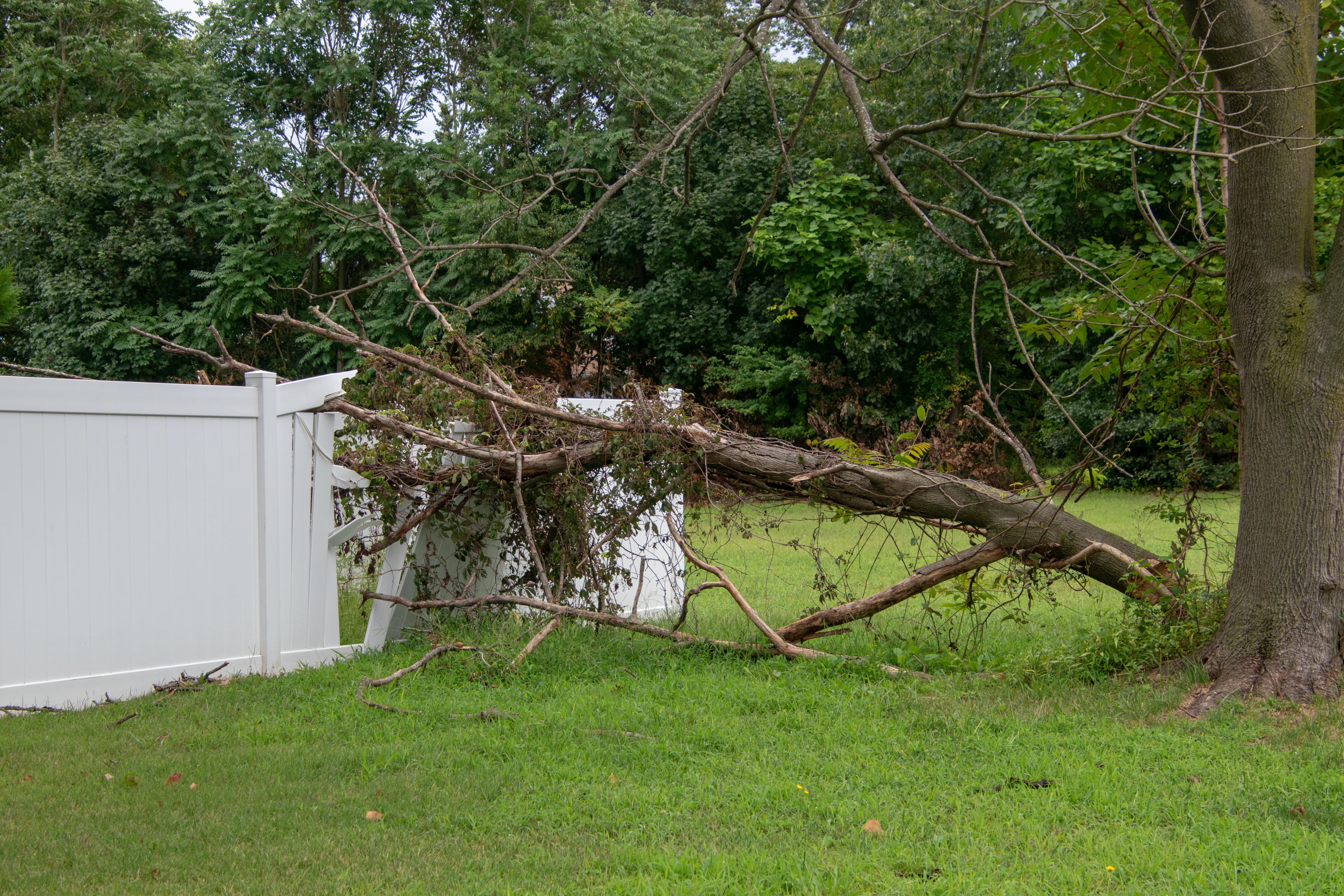
Insurance 101: What if My Neighbor’s Tree Falls in My Yard?
Sometimes one strong storm is all it takes to bring down a perfectly healthy tree, and sometimes when a tree falls, it falls in a very unfortunate place. Common damages caused by trees include damage to fences, vehicles and roofs. Sometimes the damage is minimal, but sometimes it can be extensive. We’ll clear up what to expect if your neighbor’s tree indeed falls onto your property and causes damage.
Who’s Liable?
Tree damage can be tricky. A common question is if your neighbor would be liable for any damages you suffer because their tree falls onto your property; or visa versa, you may be worried you are liable if your tree falls on your neighbor’s property and causes damage.
The best answer to this question is, “It depends.” A homeowners insurance policy typically protects your home and other structures, like fences, from specific causes of loss, known as perils. So, the situation that caused the tree to fall is important in determining if there is coverage.
Typically, if wind from a storm caused your neighbor’s tree to fall, your homeowners insurance would cover the damages to your home and structures. However, homeowners insurance specifically excludes damages caused by negligence or a maintenance-related issue. So, if your neighbor’s tree was rotting and on the verge of falling before a storm struck, then they could be held responsible for the damages the tree caused.
Initiating the Claims Process
First things first, regardless of whose tree fell where, the most important thing to do is to safely try and prevent further damage to your home and property. This might include placing a tarp over the damaged portion of your roof to prevent any water damage from affecting your home. You’ll want to take photos to document what happened and how severe the damage is.
The next step is to contact your independent insurance agent so they can explain your options and help you understand if and how to file a claim. If you in fact file a claim, a claims adjuster will visit the property to evaluate the damage and explain how your homeowners coverage might cover the damages. We recommend allowing the claims adjuster to evaluate the property before you hire someone to have the tree removed.
Is There Coverage for Tree Removal?
Depending on your policy, there may be coverage that helps to cover the cost of removing the tree from the property when it caused damage to an insured structure.
Preventing Future Tree Damage
Regular tree maintenance can help to lessen the severity of tree damage, and sometimes, prevent tree damage overall. Pay attention to the health of your trees, looking for signs of distress such as:
- dead limbs
- cracks in the trunk or major limbs
- significant leaning to one side
- branches that are over or very close to a structure or power line
- Mushroom growth on the roots or bark
It is possible for you to be held responsible for resulting damage to your neighbor’s house or property if your tree falls due (in whole or in part) to your own neglect. It’s best practice to have your trees trimmed regularly to improve the overall health of your trees.
